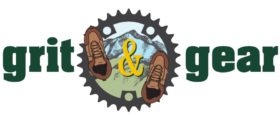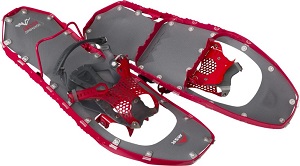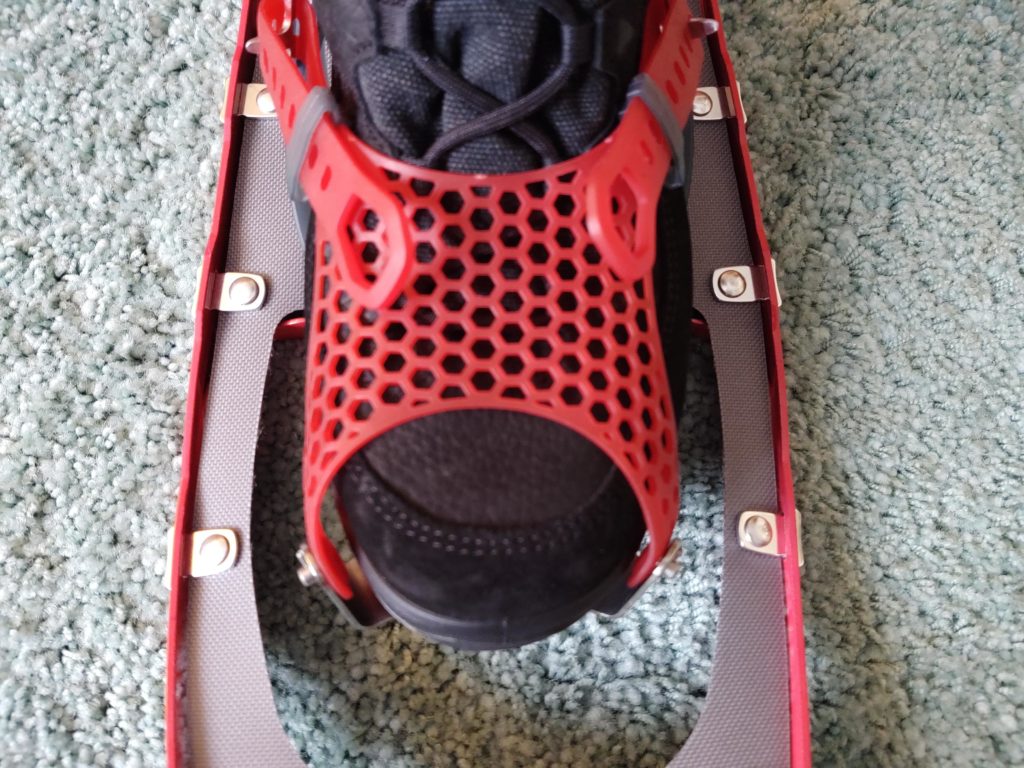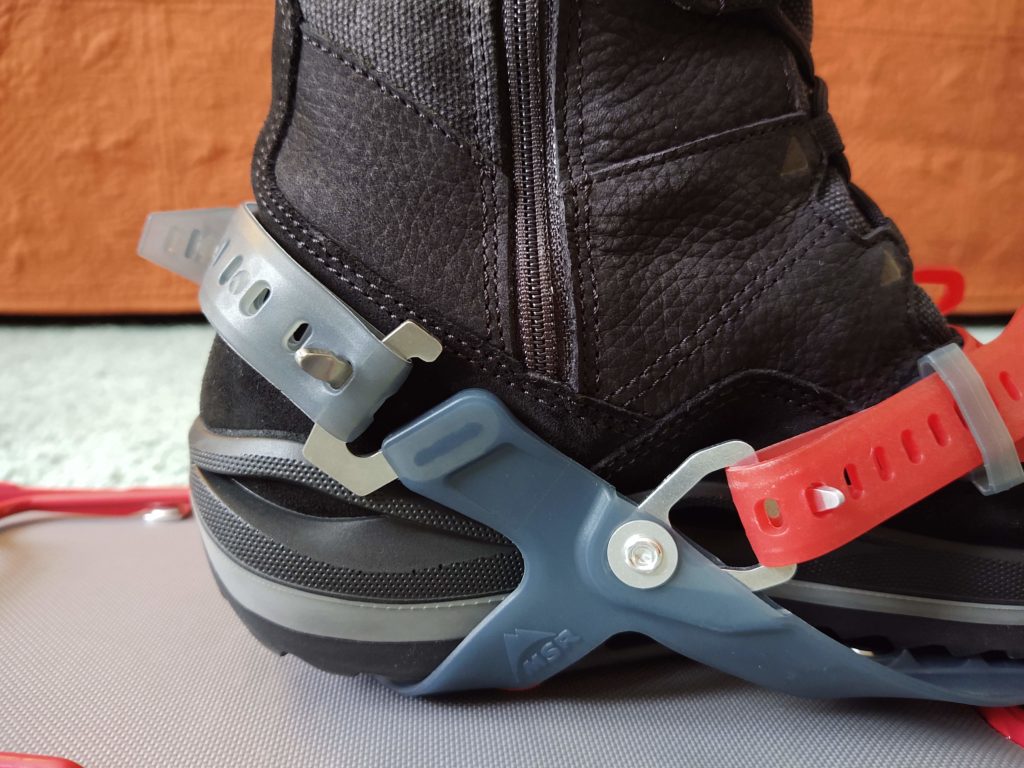The MSR Lightning Ascent snowshoes ($320) have been a staple in the MSR snowshoe line for quite a few years. This year, MSR added a new binding dubbed the Paragon, which is the result of three years of research, design and field testing.
To be perfectly transparent, I have always had a bias against “modern” snowshoes. Walking in the winter, especially in Northern Minnesota’s boreal forests and across frozen marshes and lakes, is practically a spiritual experience. I don’t want the experience muddied with technology.
So expect to see some mud-slinging between my traditional Ojibwe’s vs the MSR Lightning Ascents in this review.

What I Liked
Flotation on Deep, Drifty Snow
The whole purpose of snowshoes is to displace your weight on the snow, a phenomenon called “flotation”, so that you can walk on deep, fluffy snow. A snowshoe’s flotation directly correlates to the number of square inches of surface area that is contact with snow. The more surface area, the greater the float. To put this in perspective, my traditional Ojibwe snowshoes measure 9.5 inches at their widest part (approximately where the arch of my foot sits) and 49 inches from tip to tip while the MSR Lightening Ascents measure 7.5 inches at the widest part and 25 inches long.

MSR Lightning Ascents 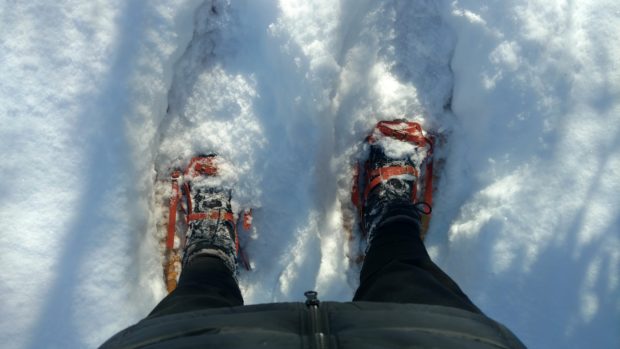
Traditional Ojibwe
To be perfectly anal, the traditional Ojibwe’s boast 650 square inches of surface space while the MSR Lightning Ascents squeak out 272 square inches without the extensions and 302 square inches with. Vindication! Of course the weight of the wearer plays into this equation, too, so proper sizing of the snowshoe is critical. I’m wearing a size small.
The MSR Lightning Ascents are constructed with a lightweight aluminum frame made from 7075-T6 aluminum and a urethane nylon deck. The symbioses of that enhances flotation very well. While my traditional snowshoes have more flotation than the MSR Lightning Ascent, I was impressed with their ability to keep up with the Ojibwe’s superior flotation.
For anyone who wants to increase their flotation—such as when walking on very deep fluffy snow or carrying a heavy pack, MSR offers an optional Lightning Modular Flotation Tail that adds five inches in length to the tail of the snowshoe to increase surface area and flotation.
Bomb-proof Materials
The MSR Lightning Ascents are made from 7075-T6 aluminum. 7075 refers to the type of aluminum alloy, which is a mix of high levels of magnesium and copper. It’s very corrosion-resistant and has excellent resistant to fatigue and cracking. T6 refers to the hardness of the aluminum. T6 is about as hard as you can get so it’s more stiff than flexible. Given its strength-to-weight ratio, 7075-T6 is used in aircraft and boat construction. And in the construction of snowshoes, apparently.
Allows for a Natural Stride
Walking your natural gait in snowshoes is directly correlated to the size of the snowshoe. If your snowshoes are wide, you will walk like a duck but have better flotation. If they’re narrow you’ll kind of walk with a natural, easy stride but have less flotation.
It’s no surprise that my traditional Ojibwa snowshoes, with their long length and wider width, have always allowed me to walk my natural gait while maintaining exceptional flotation. What did surprise me with the MSR Lightning Ascents, with its shorter length and narrower width, was that I did walk with the same stride as my Ojibwa’s. What helped with this, I believe, is that the MSR Lightning Ascents is lighter in weight (2lbs, 1 ounce each vs 2lbs, 8 ounces each for my Ojibwe’s) and has a rockered frame that contributes to a more natural walking stride.
Easy-climbing on Steep Terrain
Here’s where my Ojibwe snowshoes lose the battle to the MSR Lightning Ascent. Walking up steeper hills on crusty, slippery snow will always be a challenge in the Ojibwa’s. There’s simply no way to gain traction thanks to their glossy smooth and flat underbellies. The MSR Lightning Ascent kills it every time.
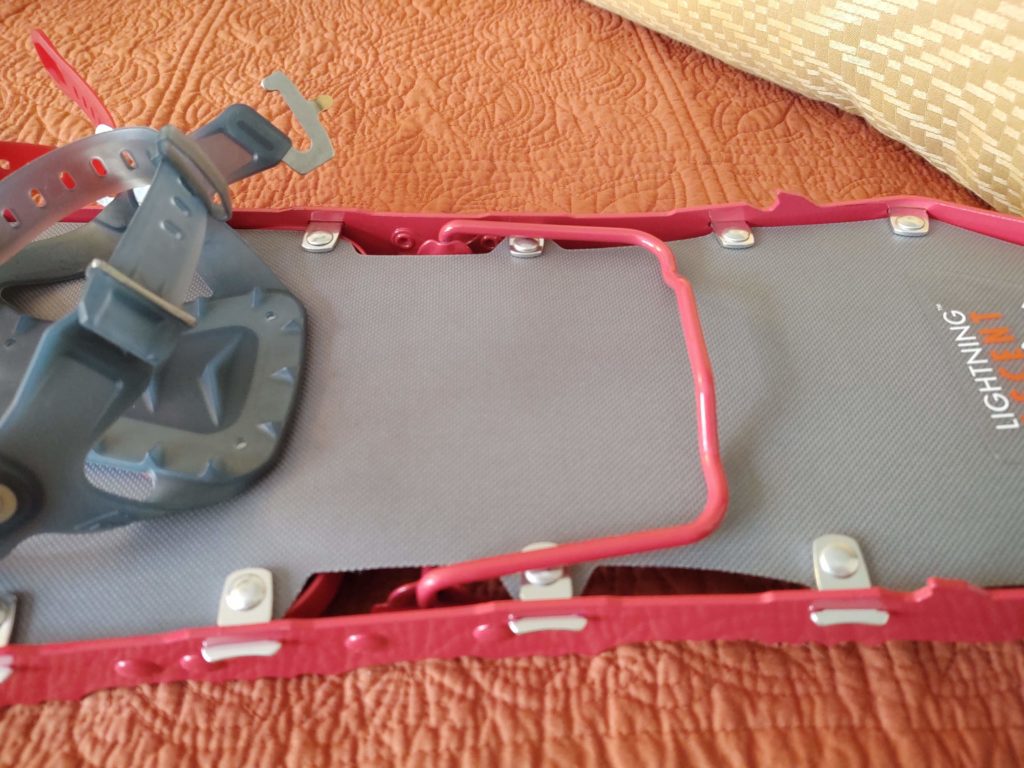
Televator down 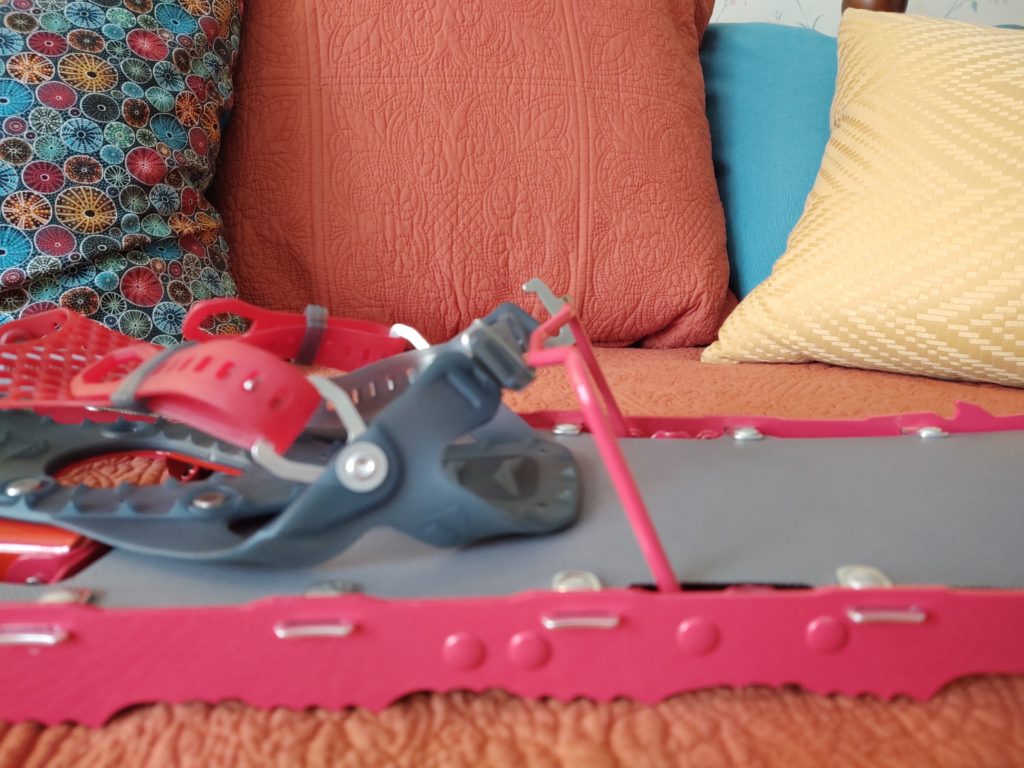
Televator up
Alpine-esque steel crampons at the forefoot sink teeth firmly and securely into any surface and transfers weight directly and securely from my boots to navigate steep inclines and declines. Built-in Ergo™ Televators, which are easy to engage with both a ski pole or hiking stick grip or your finger, raise your heel two inches to make your footing more perpendicular to the slope. On a traverse you can raise the downside Televator or you can raise both when ascending a hill.
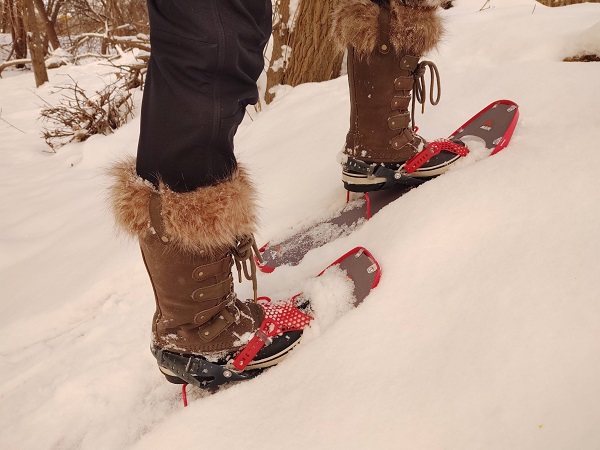
Outstanding Traction
Yet another round of defeat for the Ojibwe’s to the MSR Lightning Ascent. The MSR Lightning Ascents have two serrated ridges on the underbelly, six inches apart. Each serrated ridge contains three small “teeth” in the center and two larger “fangs” on the ends.
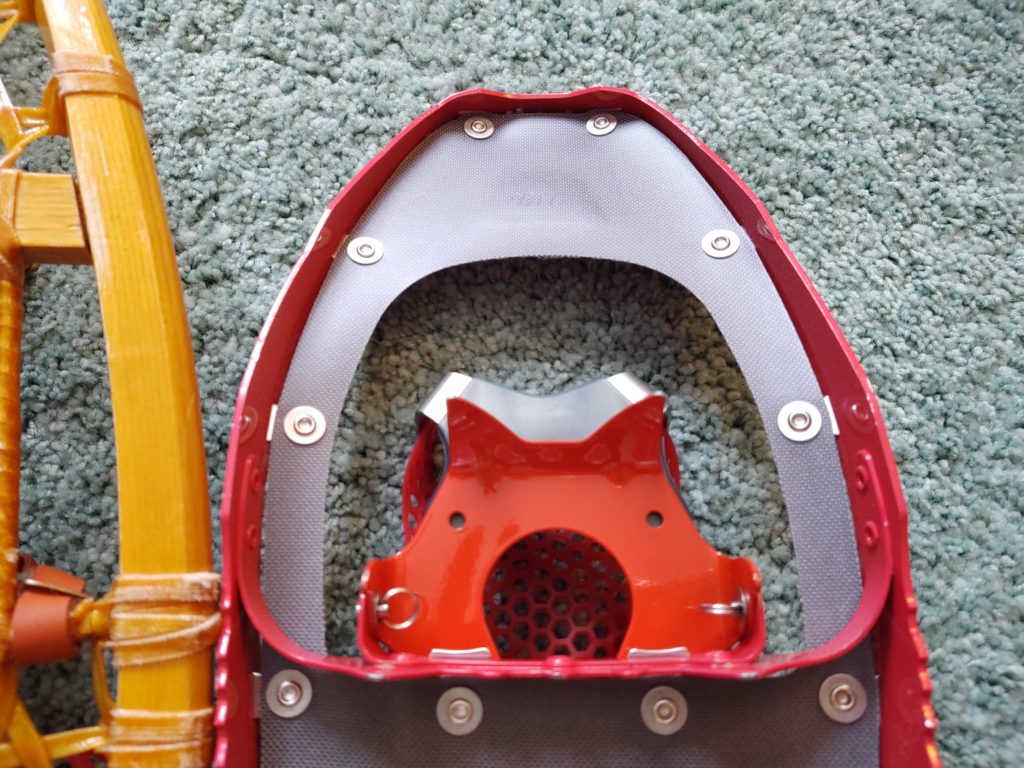
On the underbelly of the frame is MSR’s 360° Traction for all-around grip. It’s essentially a continuous row of serrated edge on the lateral sides that begin at the forefoot and extends the length of the snowshoe. The underbelly of the Ojibwe’s is still glossy smooth and flat.
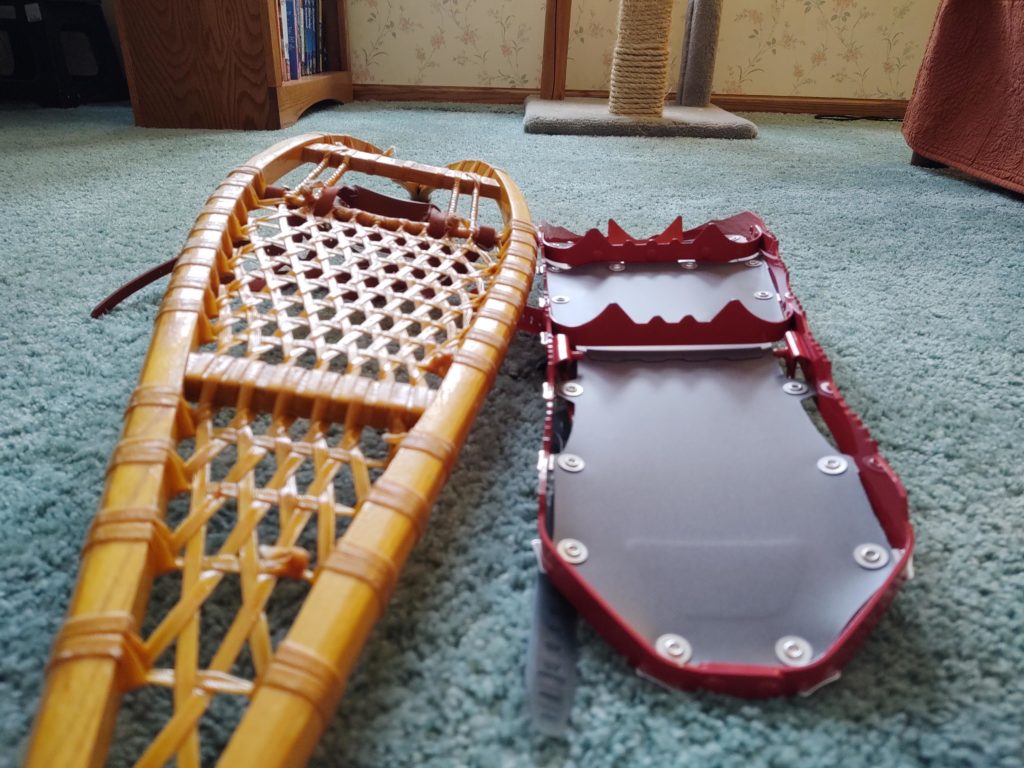
Easy in, Easy Out, Glove-friendly Bindings
I found so much to appreciate with the Lightning Ascent’s bindings, I don’t know where to start. The MSR Lightning Ascent is equipped with MSR’s new Paragon™ Bindings, an impressive and intuitive system consisting of one-piece toe box constructed of flexible freeze-proof TPU mesh with side straps that fasten to buckles at the arch of the boot.A simple belt-style heel strap that fastens into an even simpler buckle. Once I set the toe box to the width of the boot I was wearing, strapping in was literally just securing the heel strap.
The binding platform is solid with forty-five ridges that grip the outsole of your boot’s lugs to deliver secure footing and prevent any slippage on ascents and descents. And did it ever. Ascending in my Objiwe’s meant duck-walking or digging the toe of my boots into the snow and pushing with my ski poles. Descents were always a series of skids and ski turns.
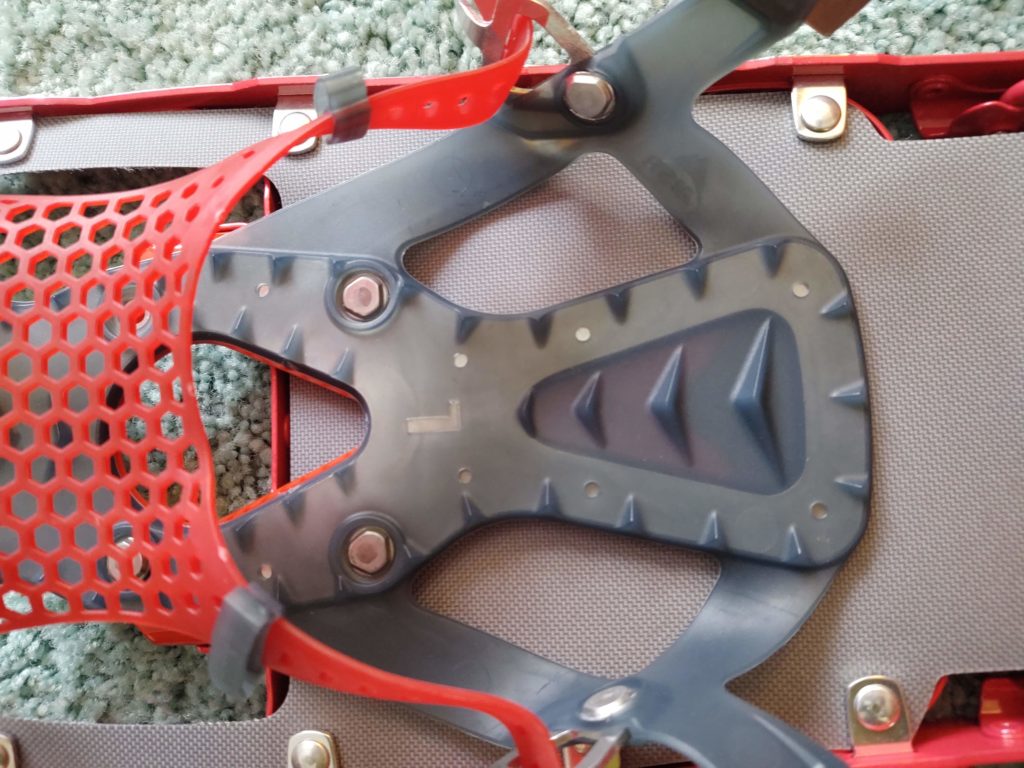
Another series of lost points for Ojibwe’s, whose leather straps succumb to freezing temperatures by becoming brittle and stiff and adjusting the straps on the fly and proper alignment of the boot in the binding is always a lottery.
I tested these snowshoes with two different boots: Sorel Joan of Arctic and LOWA Alba II GTX. Despite the Sorel’s overall girth being wider and beefier, the toebox and bindings accommodated them as well as they did the LOWA Alba’s more sleek and streamlined design. While there was strap left over, it was easily tucked into the strap keepers.
Made in the USA
MSR has been making its snowshoes in Seattle since 1995, but outsourced the binding manufacturing to China—until this year. The Paragon bindings, which are the result of three years of research, design and field testing, join the snowshoes in being made in Seattle. I love to see products like these made in the United States. It’s indicative of a company’s commitment to a higher quality product when design, testing and manufacturing are all performed under the same roof, in the same country. It ensures greater control over product quality and the environmental impacts of manufacturing processes. According to MSR, their USA-made snowshoes contribute an estimated 44 percent less CO2e emissions than those built of the exact same materials made in China.
What I didn’t Like
I always hate to leave this category blank because no piece of gear is really perfect. I can’t ding the MSR Lightning Ascents’ $320 price tag as inflated or excessive because I believe it’s well worth the value. They are solid, well-made technical snowshoes that are 100 percent manufactured in the United States.
All I can say is that when tamping down snow to make a winter campsite, the traditional Ojibwe’s work much better and cover more ground.
Final Thoughts
I have been snowshoeing for well over thir–well, let me just say I’ve been snowshoeing for a few years. My first pair of snowshoes are the same handcrafted Ojibwe snowshoes I still use today and pitted (oftentimes unfairly) to the MSR Lightning Ascent.
It was an intentional decision to bypass the modern snowshoes made from modern, cutting-edge materials in favor of the artfully-crafted traditional snowshoes made from natural materials, despite their deficiencies when it came to ascents and descents. They certainly never held me back from anything, although they did force me to improvise here and there.
But now, like a heart attack victim trudging through the Valley of the Shadow of Death, I have seen the light. A light made possible by the MSR Lightning Ascent.
